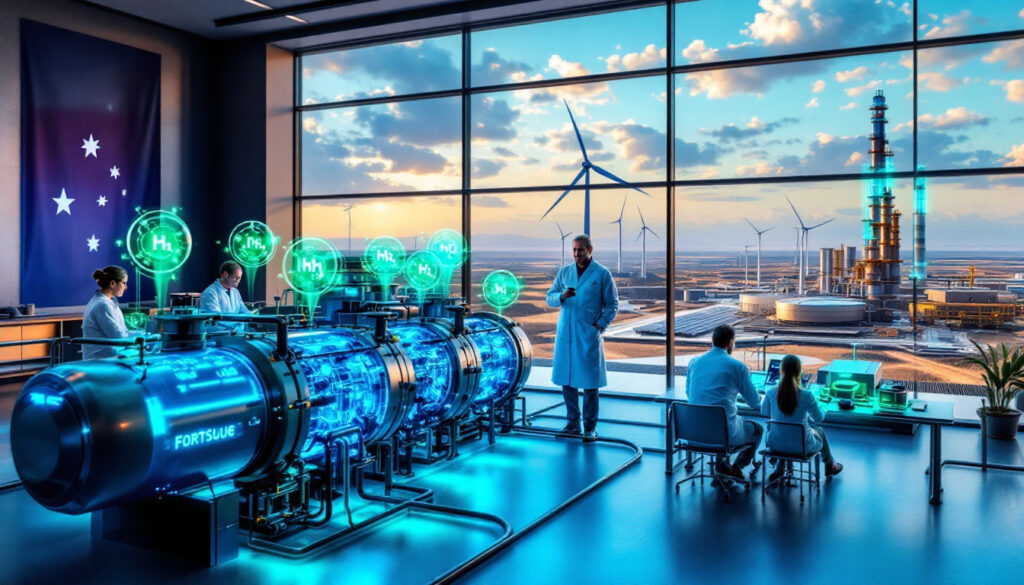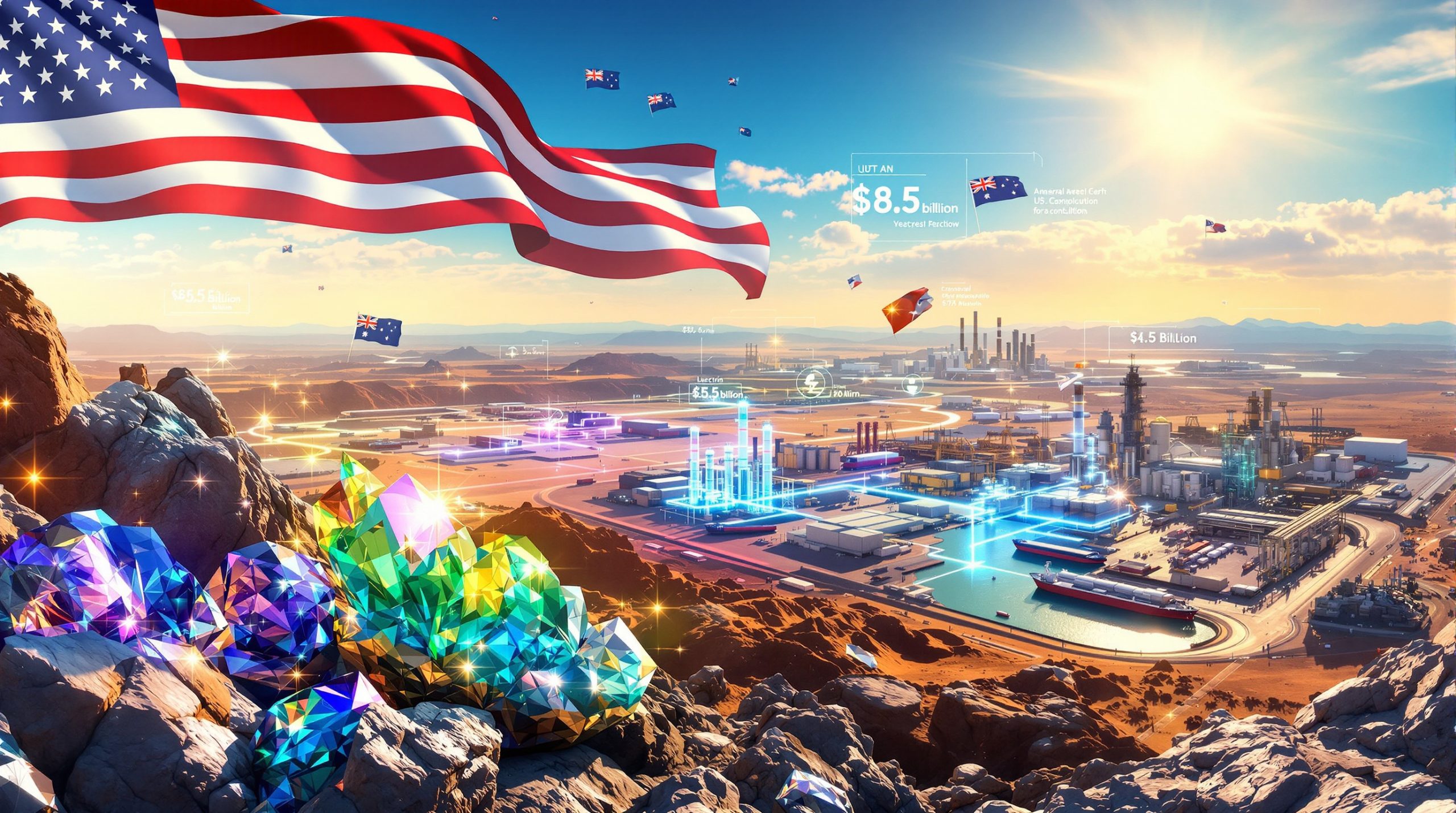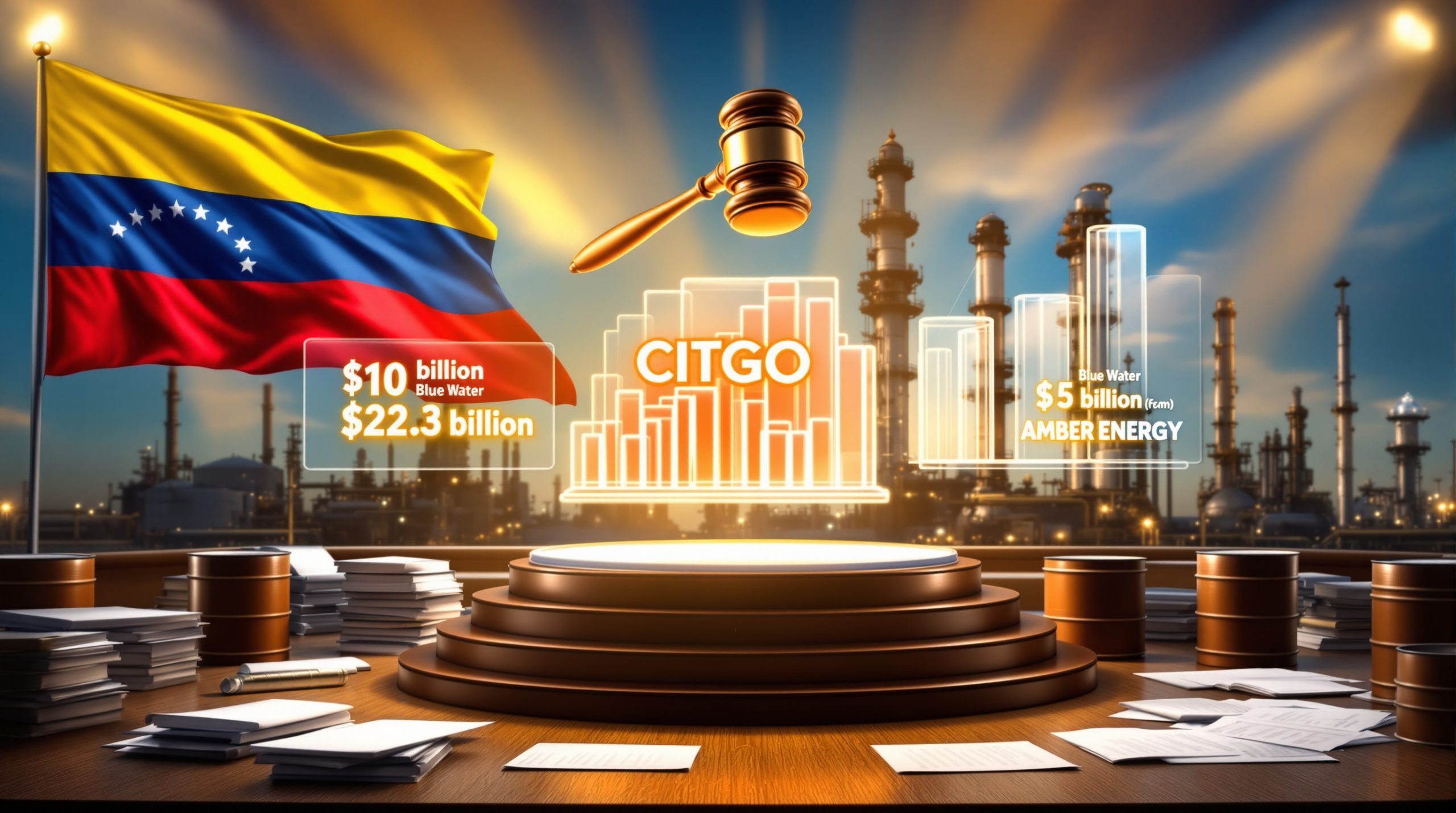The Strategic Shift: From Manufacturing to R&D
Fortescue, the mining giant led by Andrew "Twiggy" Forrest, has implemented significant changes to its green hydrogen division, cutting approximately 90 jobs while pivoting from manufacturing to research and development. This strategic realignment affects operations in both Queensland and Western Australia, with the Gladstone PEM50 electrolyser project being among the most impacted initiatives.
The restructuring follows the company's April 2025 announcement of a comprehensive review of its green energy investments amid growing market uncertainties. According to a Fortescue spokesperson, the company is "refocusing efforts into R&D of new technologies to deliver green molecules at scale, efficiently and cost-effectively."
Despite these workforce reductions, Fortescue maintains its commitment to developing Australia's domestic green iron industry, with green hydrogen remaining a core component of this vision. The shift toward R&D aims to develop more efficient technologies capable of producing green hydrogen at scale and at competitive costs.
"Our strategic pivot represents a necessary adaptation to market realities rather than an abandonment of our green hydrogen vision," a company spokesperson confirmed to Proactive Investors Australia.
This pivot mirrors similar moves by industry competitors who have realized that current electrolyser technologies face significant commercialization challenges. With typical electrolyser efficiency rates hovering around 60-70% according to recent IRENA data, substantial technological improvements are needed before widespread deployment becomes economically viable.
What Market Conditions Prompted Fortescue's Decision?
Global Headwinds Affecting Green Hydrogen Development
The green hydrogen sector globally has encountered several challenges that have influenced Fortescue's strategic pivot:
- Slower-than-anticipated market adoption from potential end-users
- Difficulties in scaling electrolyser technologies commercially
- Market instability causing hesitation among potential offtake partners
- Political shifts affecting funding mechanisms in key markets
Mark Hutchinson, Fortescue Energy CEO, had previously signaled the need to reassess project timelines in response to these changing market conditions. "We're taking a more disciplined approach to managing our green energy project pipeline," Hutchinson noted in a statement to Proactive Investors.
The company plans to provide greater clarity by the financial year's end regarding key initiatives like the Gladstone PEM50 and Arizona hydrogen development. This measured approach reflects the broader industry recognition that green hydrogen costs remain 2-3 times higher than fossil alternatives, according to recent industry analyses.
Policy Uncertainty Creating Investment Challenges
The green hydrogen landscape faces significant policy volatility in multiple jurisdictions:
- United States: While hydrogen tax credits under the Inflation Reduction Act remain intact, broader funding mechanisms including grants and loans have stalled
- Australia: Several high-profile setbacks including:
- Queensland government's cancellation of funding for Stanwell Corporation's CQ-H2 project
- South Australia's dismantling of its Office of Hydrogen Power in May 2025
- Termination of a proposed $600 million hydrogen power plant and electrolyser project in Whyalla
These policy shifts have created an environment where long-term investment decisions become increasingly difficult to make with confidence. As one industry analyst put it, "Policy volatility hampers investment at precisely the moment when clear, consistent signals are needed most."
How Is Fortescue Positioning Its Green Hydrogen Future?
Research Focus and Technology Development
Fortescue's pivot represents a strategic recalibration rather than abandonment of green hydrogen ambitions. The company continues to view green hydrogen as the "fuel of the future" and is focusing on:
- Advancing electrolyser technology through concentrated R&D efforts
- Developing more cost-effective production methods
- Creating scalable solutions that can support industrial applications
- Aligning development timelines with market and policy realities
This approach allows Fortescue to maintain its position in the green hydrogen space while reducing immediate capital expenditure during uncertain market conditions. The current production costs for green hydrogen range between $4-6/kg compared to $1-2/kg for grey hydrogen produced from natural gas, highlighting the cost challenge that R&D must overcome.
Maintaining Core Strategic Vision
Despite the restructuring, Fortescue continues to emphasize that green hydrogen remains essential to its long-term vision of green iron production. The company's focus on materials science and high-efficiency electrolysers aims to bridge the cost gap that currently inhibits mass adoption.
Recent prototypes developed by Fortescue's technology teams have shown promising efficiency improvements, though technical details remain proprietary. This R&D-focused approach positions the company for future market growth while acknowledging current commercial realities.
What Are The Broader Industry Implications?
Green Hydrogen Market Evolution
Fortescue's pivot reflects broader industry trends where early enthusiasm for green hydrogen is being tempered by commercial realities:
- Technology maturation: The sector is recognizing that further technological advancement is needed before widespread commercial deployment
- Cost challenges: Production costs remain significantly higher than fossil fuel alternatives in many applications
- Infrastructure gaps: Lack of distribution and storage infrastructure limiting market growth
- Market development: End-user markets developing more slowly than initially projected
These challenges mirror experiences in other renewable energy solutions where early-stage over-optimism gives way to a more measured implementation approach. The Hydrogen Council projects global hydrogen demand could reach 140 million tonnes by 2030, but realizing this potential requires resolving current technical and economic barriers.
Investment Pattern Shifts
The green hydrogen sector is experiencing an evolution in investment patterns:
| Previous Approach | Emerging Approach |
|---|---|
| Rapid scaling of manufacturing | Focused R&D to reduce costs |
| Multiple parallel projects | Selective project development |
| Aggressive timelines | Adjusted timelines aligned with market readiness |
| Broad application focus | Targeted high-value applications |
This shift resembles what UBS Research recently termed the hydrogen "valley of death" – the challenging period between promising technology demonstrations and viable commercial deployment. Companies like Shell and Air Products have similarly adjusted their green hydrogen strategies to focus on high-value, near-term applications while continuing R&D for broader future deployment.
What Does This Mean For Australia's Green Energy Ambitions?
National Hydrogen Strategy Challenges
Australia has positioned itself as a potential green hydrogen superpower, but Fortescue's restructuring highlights some of the challenges facing this national ambition:
- Policy consistency issues across state and federal levels
- Coordination challenges between public and private sector initiatives
- International competition from other hydrogen-focused nations
- Balancing immediate economic priorities with long-term energy transition strategies
The dismantling of South Australia's Office of Hydrogen Power in May 2025 signals some retreat from earlier ambitious targets. However, industry experts note that these adjustments represent a maturation of the sector rather than abandonment of hydrogen aspirations.
Future Opportunities Remain
Despite the current challenges, several factors continue to support Australia's green hydrogen potential:
- Abundant renewable resources: Australia possesses approximately 40% of global solar irradiance potential according to Geoscience Australia
- Strategic export position: Geographic positioning for export to Asian markets, exemplified by recent agreements like Japan's $3.4 billion hydrogen import deal
- Existing expertise: Established capabilities in energy export infrastructure
- Research capabilities: Strong scientific institutions that align with Fortescue's R&D pivot
"Australia retains significant competitive advantages in green hydrogen production despite the current market recalibration," noted energy analyst Dr. Helen Wilson in recent comments to Proactive Investors.
These structural advantages suggest Australia's green hydrogen ambitions remain viable, though perhaps on a longer timeline than initially envisioned.
How Should Investors Interpret Fortescue's Strategy Shift?
Key Considerations for Market Watchers
Fortescue's strategic pivot offers several insights for investors monitoring the green hydrogen space:
- Timeline adjustment: Commercialization of green hydrogen at scale may take longer than initially projected
- R&D prioritization: Companies focusing on technological advancement before large-scale deployment
- Selective implementation: More targeted approach to project development based on economic viability
- Policy dependence: Continued sensitivity to government policy and support mechanisms
Investors should note that while near-term revenue expectations from green hydrogen may need adjustment, companies developing proprietary technologies during this R&D phase could gain significant competitive advantages as the market matures.
Long-term Versus Short-term Perspectives
The restructuring represents a shift from short-term deployment to longer-term strategic positioning:
- Short-term: Reduced capital expenditure and workforce costs
- Medium-term: Focus on developing proprietary technology advantages
- Long-term: Maintaining position for future market growth when conditions improve
This approach mirrors successful patterns from other emerging technologies, where early movers who survived initial market corrections often emerged as industry leaders. For Fortescue specifically, this recalibration maintains its green hydrogen vision while aligning with current market and technological realities.
FAQs About Fortescue's Green Hydrogen Pivot
Is Fortescue abandoning its green hydrogen ambitions?
No, Fortescue is repositioning its approach from manufacturing to research and development while maintaining its commitment to green hydrogen as a core component of its future green iron production strategy. The company continues to view hydrogen as the "fuel of the future" according to official statements from Fortescue Energy.
How does this affect Fortescue's overall decarbonization goals?
The company maintains its decarbonization vision but is taking a more measured approach to implementation timelines in response to market conditions. This represents a tactical adjustment rather than a strategic reversal.
What does this mean for Australia's hydrogen export ambitions?
Australia's potential as a hydrogen exporter remains strong due to exceptional renewable resources and geographic positioning, but Fortescue's pivot suggests the timeline for large-scale hydrogen exports may be extended as technology and markets mature.
How does this compare to other companies in the green hydrogen space?
Fortescue's approach mirrors trends seen across the industry, where companies are recalibrating timelines and focusing on technological advancement before large-scale deployment. Similar adjustments have been observed at Plug Power, Shell, and Air Products.
What would need to change for Fortescue to accelerate its green hydrogen plans again?
Key catalysts would include:
- Technology breakthroughs reducing production costs toward $2/kg
- Stronger policy support mechanisms with long-term stability
- Increased end-user demand through carbon pricing or mandates
- More stable investment conditions supporting large capital deployments
Pragmatic Adaptation in a Developing Market
Fortescue and green hydrogen pivot represents a pragmatic adaptation to current market realities rather than a fundamental shift in strategic direction. By focusing on technology development while reducing immediate capital expenditure, the company is positioning itself for long-term participation in the green hydrogen economy while acknowledging the challenges of immediate large-scale deployment.
This approach allows Fortescue to maintain its vision of green hydrogen as central to future decarbonization efforts while adjusting to the practical realities of market development, technology readiness, and policy environments. The company's 90 job cuts across Queensland and Western Australia operations signal a significant but targeted restructuring rather than wholesale retreat.
For the broader green hydrogen sector, Fortescue's strategic shift signals a maturing market moving from initial enthusiasm to more measured implementation based on commercial viability. This pattern resembles the development path of other industry innovation trends where initial hype gives way to a more disciplined approach before eventual mainstream adoption.
"The green hydrogen sector is experiencing a necessary maturation phase that will ultimately strengthen its long-term prospects," according to industry analysts monitoring Fortescue's strategic adjustments.
As with other emerging clean technologies, the timeline may be longer than initially anticipated, but the fundamental drivers remain intact: decarbonization imperatives, renewable energy cost declines, and industrial sector transition needs all continue to support green hydrogen's long-term potential despite current market adjustments. Additionally, ongoing mines electrification advances and data-driven operations will play crucial roles in supporting the broader energy transition that green hydrogen aims to facilitate.
Are You Tracking ASX Mining Discoveries in Real-Time?
Don't miss the next breakthrough mineral discovery on the ASX. Subscribe to Discovery Alert's proprietary Discovery IQ model for instant notifications when significant discoveries are announced, giving you the edge to act before the market fully responds. Understand why major discoveries can generate substantial returns by visiting our dedicated discoveries page.




